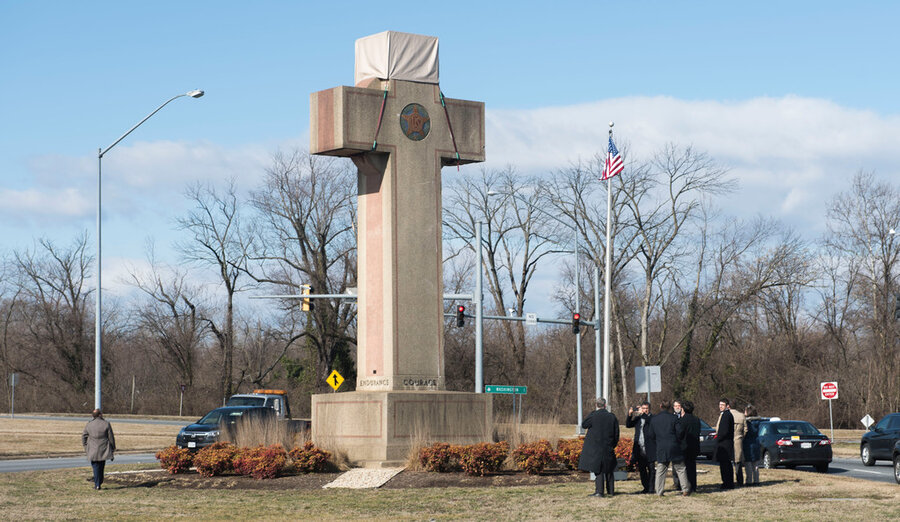Court’s burden in keeping religious harmony
Loading...
One strength of democracy is its ability to guide people of different faiths to live in harmony. For most religions, harmony is a core promise. Yet it’s often secular government that must ensure it. That point was made clear in a ruling Thursday by the United States Supreme Court.
In a 7-2 decision, the high court ruled that a local government in Maryland can continue to maintain a 40-foot cross at a busy intersection. Known as the Peace Cross, the monument was built in 1925 on private land with private money to honor soldiers who died in World War I. The state took it over in 1961 and has spent more than $117,000 to preserve it. A group of local residents sued to have it removed, arguing government was endorsing a particular faith in keeping a Christian symbol.
The court decided that moving the monument to private land or “radically” altering it would be a hostile act toward religion, in large part because the cross had taken on different meanings over the decades. It was also not certain if the motives for building it were strictly religious. Writing for the majority, Justice Samuel Alito stated:
“For nearly a century, the Bladensburg Cross has expressed the community’s grief at the loss of the young men who perished, its thanks for their sacrifice, and its dedication to the ideals for which they fought….The Religion Clauses of the Constitution aim to foster a society in which people of all beliefs can live together harmoniously, and the presence of the Bladensburg Cross on the land where it has stood for so many years is fully consistent with that aim.”
Justice Alito pointed to other common uses of the cross symbol, especially by charity groups such as the Red Cross, or in aspects of healing, such as on Band-Aid boxes, or at government-run cemeteries with religious headstones. Should government be barred from involving itself with symbols that have taken on a meaning beyond their religious origin?
Indeed, many religious sites around the world are honored beyond their original purpose. When the Taliban in Afghanistan blew up giant stone statues of Buddha in 2001, the world mourned the loss of a 6th-century cultural treasure. When fire struck Paris’ Notre Dame Cathedral this year, Christians and non-Christians alike sought to rebuild it.
The high court frequently struggles with cases involving long-standing religious symbols in public places (such as monuments to the Ten Commandments) or religious expressions with a long history (such as opening prayers at a town meeting). It has found no easy formula for deciding such cases. In fact, in this latest ruling, the seven justices in the majority issued six separate opinions. In general, the court rules against new attempts to honor only one religion in the public square. And it is especially wary of government using its immense power to coerce or disparage religion.
With many of the world’s violent conflicts driven by clashes over religion – from Yemen to Myanmar to the Central African Republic – it is helpful to see the Supreme Court search for ways to maintain harmony in the U.S. among different faiths and between believers and nonbelievers. Perhaps the justices keep hoping the faith community will lift this burden from them.







